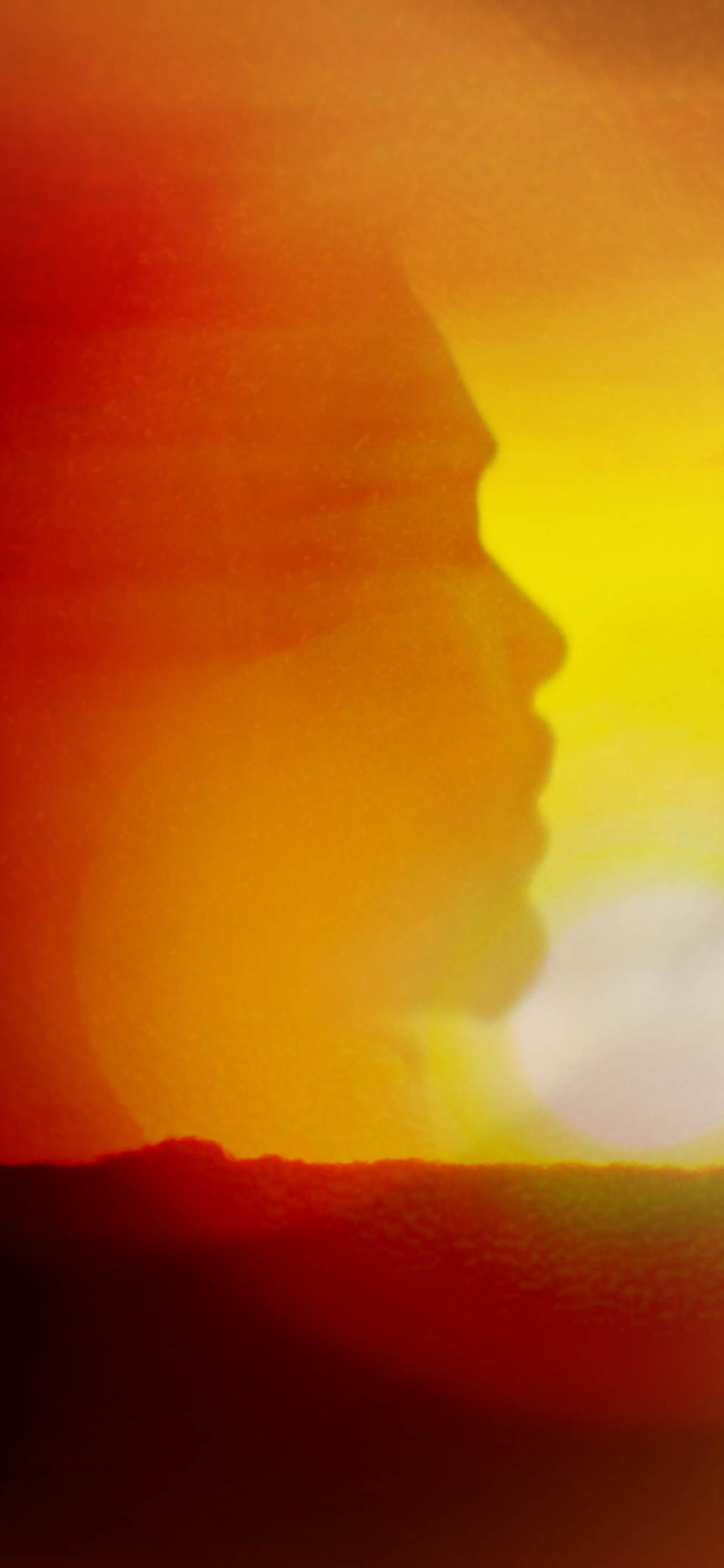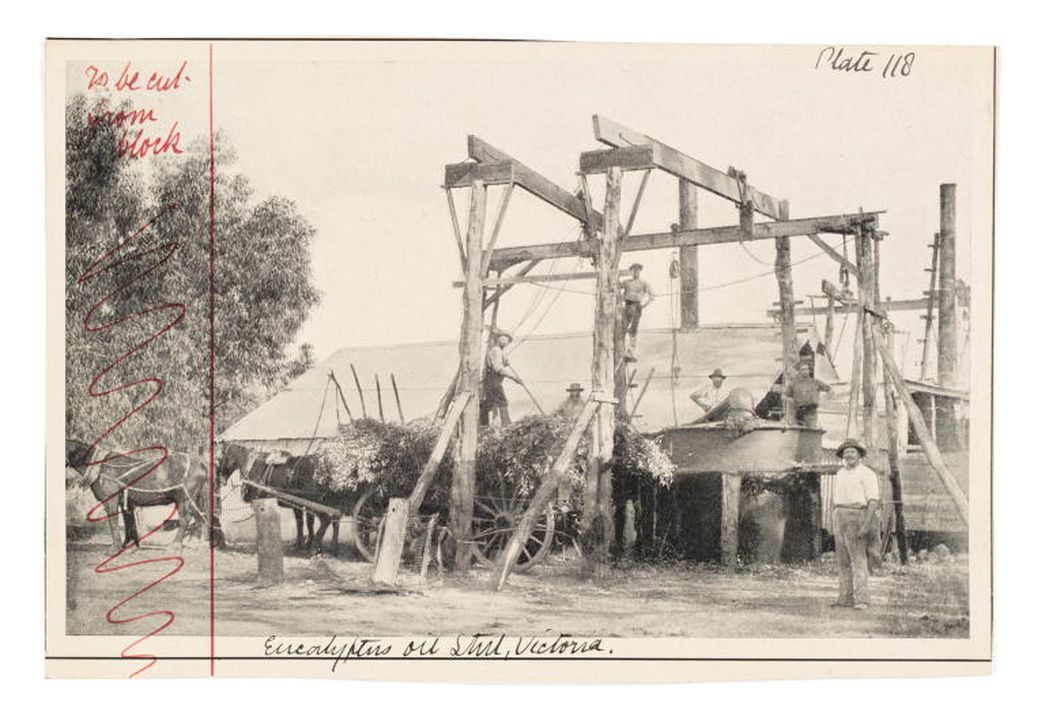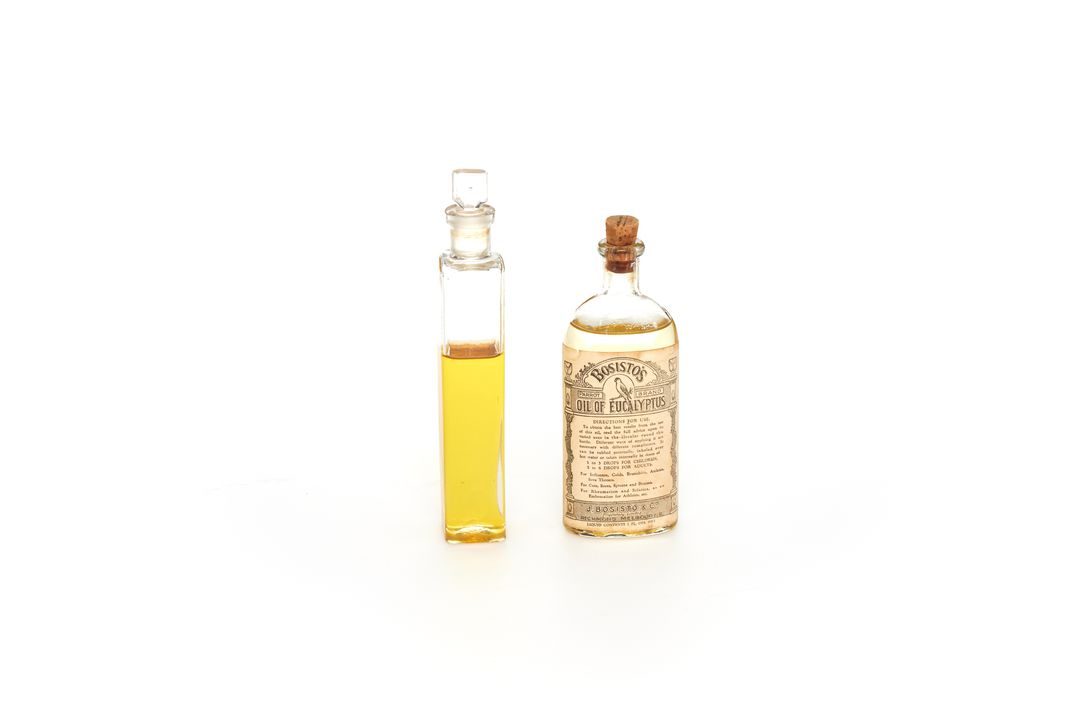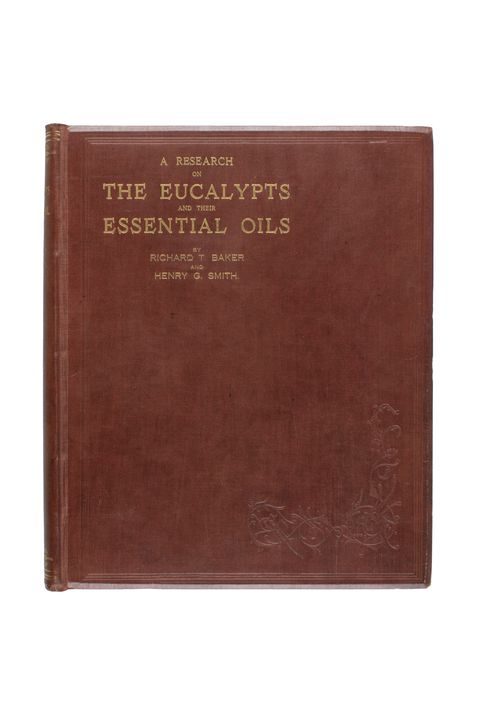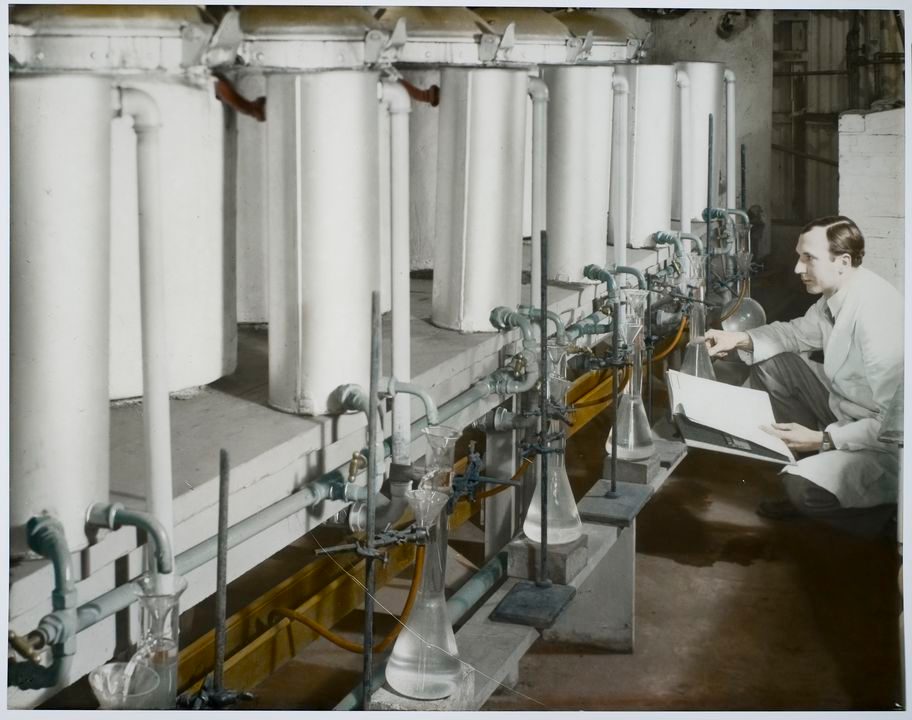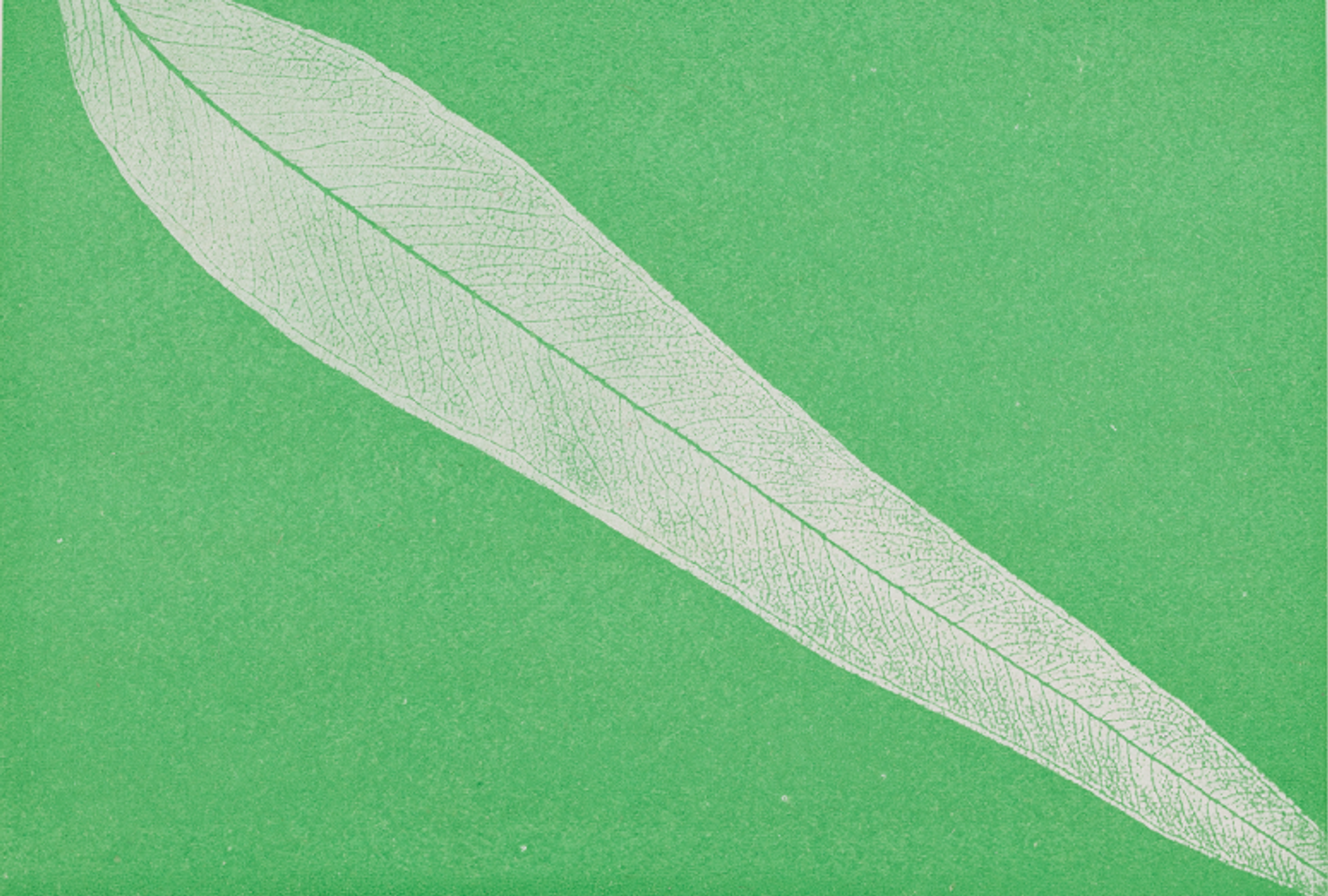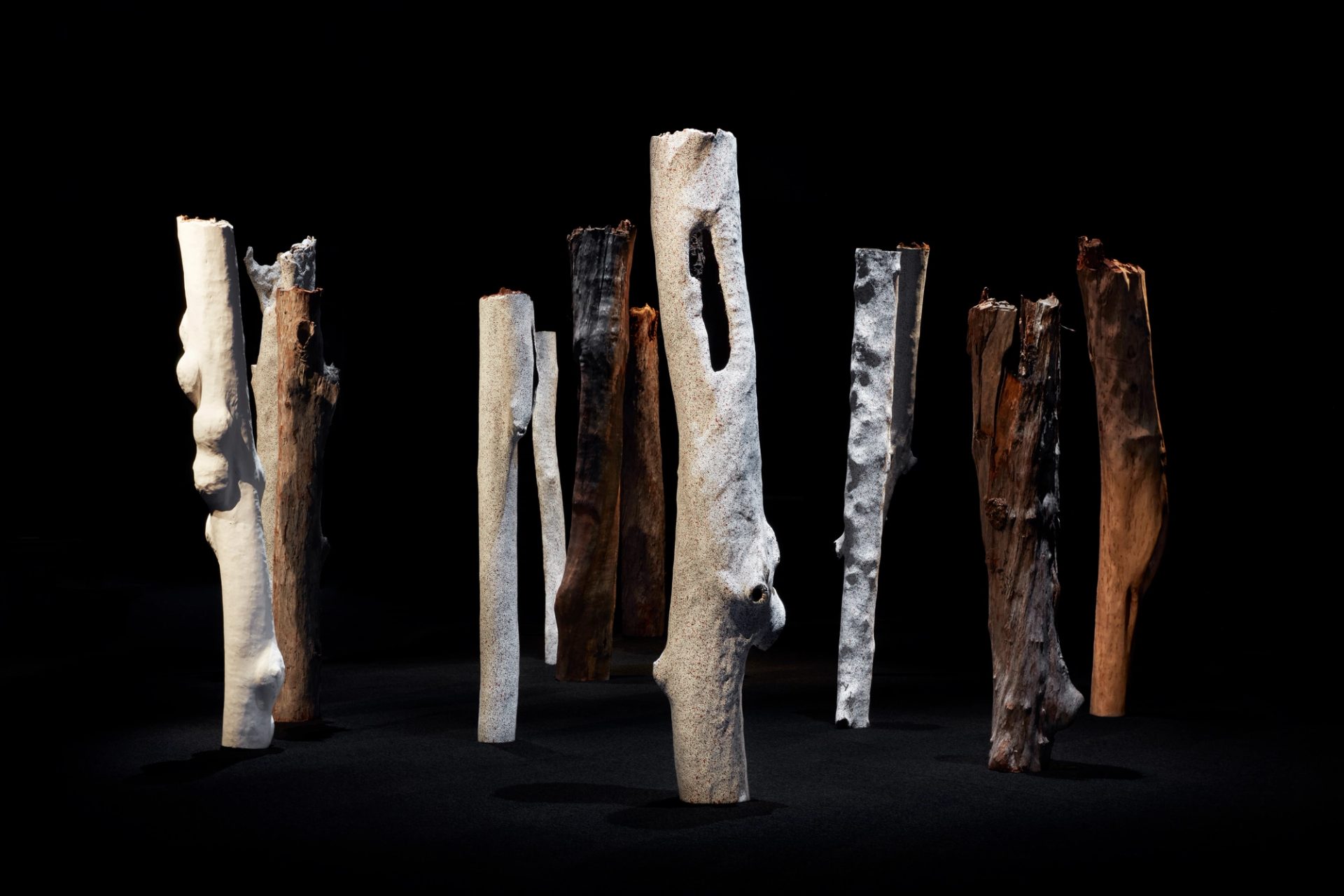In Relation – Alchemy

Alchemy is the second episode of In Relation, a six part podcast series by Powerhouse inspired by eucalypts and the exhibition Eucalyptusdom.
Alchemy is at once a medieval science, a speculative philosophy, a force that transforms matter in mysterious ways, and a metaphor for transformation. We look at how plants and trees become forces for symbolic and material transformation in Western art and culture.
‘I’ve learnt from nature itself. And that’s been a very deep experience...wanting to create a space that will take someone in to experience things in nature and recognise its fragility in order for them to care for it.’
Transcript
Agatha Gothe-Snape The Powerhouse honours the Traditional Custodians of the land on which our museums are situated. We respect their Elders past and present and recognise their continuous connection to Country. We respectfully advise First Nations audiences that Eucalyptusdom and this podcast, In Relation, address the museum's colonial collection practices and include objects and materials of, and from Country.
I'm Agatha Gothe-Snape, and I'm an artistic associate at the Powerhouse museum in Sydney, Australia. I co-curated the exhibition Eucalyptusdom alongside Nina Earl, Emily McDaniel, and Sarah Rees. This exhibition reckons with our cultural history and ever-changing relationship with the gum tree. It contains over 400 objects from the Powerhouse collection alongside 17 newly commissioned works.
This podcast is a series of dialogues around a selection of key themes, connected to Eucalyptusdom. Featuring practitioners, curators, researchers, and writers it explores the way we learn with and from trees.
In this episode, ‘Alchemy’, we hear from Gina Buenfeld-Murley and Janet Laurence. Gina and Janet both research and share alchemical transformations in their work. Their practices overlap in how they each observe and represent planned alchemy to create models for social transformation and ecological action. They start here by talking about how they define and understand alchemy in the context of their work.
Here's Gina Buenfeld-Murley.
Gina Buenfeld-Murley I'm Gina Buenfeld-Murley, exhibitions curator at Camden Art Centre, an institution for contemporary art in London, UK. I'm also the co-curator with Martin Clark of The Botanical Mind: Art, Mysticism and the Cosmic Tree, which was an exhibition looking back through history at diverse cultural, spiritual, and mythological traditions to reappraise the importance of plants to life on this planet. It drew from esoteric ideas from alchemy and the western occult tradition to relate the fractal geometries that appear in plant shapes and patterns to the ancient metaphysical belief in terrestrial life as a microcosm of the universe.
I was really struck by a kind of alchemy that became apparent to me when thinking about plants and how they behave and photosynthesis. So, this relationship between energy from the celestial realm becoming matter and creating the world and the environment around us.
So, plants really being the first station of life on the planet that provide the conditions for more complex life forms to exist afterwards. So, that was the first sort of intuitive attraction to the ideas of alchemy. And I guess I was coming to it with, you know, my own understanding that I think many people have, that alchemy was a kind of pro scientific tradition, a form of magic that was about transforming base metals into gold. So, these very kind of mysterious ideas.
AG-S Central to Gina's understanding of alchemy is the work of psychoanalyst, Carl Jung, and his illustrations of, and explorations into the subconscious.
GB-M The more that I read about it and discovered, and particularly in my reading of Carl Jung, one of the great psychoanalysts of the 20th century, is that actually the alchemical tradition is much more about thinking about the relationship between mind and matter. It was these extraordinary illustrations that really drew from a medieval idiom that often had these vegetal forms. So, what would be referred to as a cosmic tree or a mandala form, which to him really spoke to the transformation of the individual. So, the transformation of a soul on the journey of one's life. To Jung, that was really the potential of alchemy, was to bring about this transformation in the self. To me, this was really relevant in relation to the work that I was doing and the thinking around the vegetable kingdom, the exhibition that I curated here in London, The Botanical Mind: Art, Mysticism, and The Cosmic Tree, was looking at the sort of sympathies and correspondences through time and across a broad range of geographical locations of these images of the tree or the plant, which kept recurring in the context of often spiritual traditions or sort of cultural mythologies, which relate the individual to the world and the spirit realm.
AG-S Like Gina, Janet Laurence's experience of alchemy is intertwined with plants.
Janet Laurence I'm Janet Laurence. I'm a contemporary artist based in Sydney, and I work with the lives of plants and alchemy and have done so for over 30 years. I find it a very enduring area to be involved in.
AG-S Janet first encountered alchemy as a young artist studying in Italy.
JL We had to make our own pigments from ground up substances. And of course, it was a very alchemical thing of then making paint and then paint that starts to form images. And so, this matter of the world starts to create meaning, as it were. I really got into alchemy. And so, it became the subject of my work as well as very slowly, it was being embodied as a language. And for a long time, I was working with that idea of transformation of matter and finding meaning in that in itself.
AG-S Understanding alchemy changed the way Janet related to the world around her.
JL I'm a great one for being in a garden at night. And I absolutely love this whole relationship between certain insects and plants and all of these things that happen and the extraordinary events of flowers and so on. It's just mystical. And it gives you such a sense of wonder. And yet it seems like this deep pattern that's creating all of this, and it all seems to interconnect with everything. There's just so many ways that alchemy reappears in our life. I make these elixir labs where we drink the juice of plants in order to have a transformation. But that also takes us into the world of the plants. We invite the plants into us. Alchemy then becomes this way of us being totally interconnected into nature around us.
AG-S I was thinking about how things are entangled and interlinked and how alchemy really is in the doing of Janet's work. I asked Janet and Gina if they could respond to this quote from a 1917 journal entry by Hilma af Klint, which was included in the catalogue for The Botanical Mind. ‘Firstly, I shall try and understand the flowers of the earth shall take as my starting point, the plants of the world. Then I shall study with equal care that which is preserved in the waters of the world. Then it will be the blue ether with all its various animal species. And finally, I shall penetrate the forest, shall study the moist moss of the trees of the forest and all the animals that dwell among the cool dark messes of the trees.’
GB-M So, Hilma af Klint, many people may now know her work. She's become very well known as an important figure in abstraction and in modernism, but she was largely unknown for many, many years and actually didn't want her work to be seen. She felt that it was what she was conveying in the work was too profound for people to understand in her time. So, she wanted the work to be seen later, and it was prophetic in many ways. Like some of her, her artwork depicted the blitz of World War II. She was an extraordinary person. The way in which her work is about a kind of communion with nature harnessing or appreciating the patterns and the abstract forms within nature; how nature is both intelligent and intelligible; it speaks in its own language; it speaks with symbols and patterns.
As Janet was describing so beautifully, one enters into it with a sense of wonder and attuned to its ways, to its rhythms, to its patterns. It can really speak to you. And I suppose some people might describe that as a form of mysticism, really. And I think that, you know, it's not incidental that so many, what are referred to as sort of outsider or self-taught artists like Hilma af Klint, was often sort of associated with those kinds of artists. That they are drawn to vegetable motifs or plant motifs because there is this just really sort of yeah, bedazzling way that plants behave and display their characters. And there's definitely a real magic there.
AG-S Nature has taught Janet the power of interconnectedness and the importance of carrying that into artistic practice.
JL I've learnt from nature itself and that's been a very deep experience. Using installation as a way of bringing different things together and always wanting to create a space that will take someone in to experience things in nature in order for them to recognise its fragility and in order for them to care for it. You know, doing things like hospital for plants, where you see them all on scientific sort of grips and things, but it's just still a way to create an empathy and enable others to enter into that so that we can bring about a kind of care and healing for it. And so, even in doing that though, I have to think about how we can experience for you this transformation of your experience of something into one of love. I guess it's about love because I am an activist now, really trying to bring about environmental actions. And I really believe that until we can actually care about our natural world and love it, we won't act for it.
We formed a group called The Dirt Witches, three of us together when we were so appalled at a political situation that we were suddenly in. And we said, ‘We have to become witches to cast spells and to change something.’ So, alchemy does offer us the idea of magic. It does offer us this possibility of radical transformation. It does offer us another way of thinking and a potency. And I think we so badly need it at the moment. I think we are really so much at the end of this road that we have to do something. And so, I think it would be so extraordinary for this alchemical thinking to take over. And I do believe it could be really transformative and offer potency and hope in order to create a space for real action. And I just feel that our chemical language is a way into that.
AG-S If you live in Sydney, you might have seen The Dirt Witches’ 2021 installation Barlow Street Forest. The popup, micro forest in Sydney's CBD contains endangered plant life and native bees. But it's the alchemical combination of place, plant and people that creates a sense of connectedness. Here's Gina.
GB-M If I reflect on the situation that we're in, I think that there's a crisis of spirit, really. And Janet refers to it as love, you know, coming into our engagement with the environment with a sense of love. And I really relate to that. I think these are a lot of the practices that we've lost and, you know, somewhere they have been carried along. And one of the places that they've been carried along is in the underground, in the occluded, in the occult and alchemy really belongs to that tradition. It's something which was driven underground by the enlightenment, by these sort of scientific forms of inquiry. But there is still an important role that are more kind of intuitive or heartfelt appreciation or a spiritual engagement with the rest of nature.
AG-S Engaging with nature doesn't need to be a complicated practice. Start simply step outside and walk until you find a tree.
GB-M I love my garden at night and there's a eucalyptus tree actually, that I planted when I first moved here eight years ago, I planted it. It was sort of knee high and it's now towering above the rest of the buildings here. So, it's sort of five stories high now. It's just grown so quickly, but I enjoy that tree most at night because I go out there and it draws all of my attention up to the sky, to the moon, to the stars. And it's that sort of, as I said earlier, you know, nature speaks in these symbols and signs and that access that draws your attention and your sense of being upwards away from where you are rooted in the ground towards the heavens is really important and significant. And yeah, I just love the way that nature sort of speaks in that way to us.
‘Plant alchemy and its expression through art plays an important role in social transformation and ecological action.’
AG-S For eucalypts, regeneration and propagation can sometimes be triggered by heat and fire, both key elements in many alchemical processes. Bush fires in Australia and elsewhere are intensifying under climate change, and in many cases eucalypts are being pushed beyond the brink of survival. But under the right condition fire produces a kind of alchemy that can be a force for transformation. As Gina explains, Carl Jung would describe this as nigredo.
GB-M Nigredo is the blackening. So, it's about petrifaction and this sort of decomposition of matter. For Jung, that spoke to him about the shadow, like the contents of our unconscious, the place you go to into your darkness in order to go deep into your soul, the dark night of the soul. And then from there comes the light. Then you move back up again towards the light. And if you think about the process of the vegetable kingdom, you know, the sort of shedding of leaves and that sort of creating the fertility of the ground for then life to come back and this sort of cyclical regeneration of life, which I feel is something so powerful revealed there.
JL There was an Australian exhibit in Vienna that was taken over there by some natural historians, years and years ago in the museum in Vienna. And when it was bombed in the war, there was a fire and this old banksia just opened. And it had been there for so many years and all its seeds came out and nobody even realised at that stage that that could happen. And so that's a really interesting thing, is this preservation. And we still don't know if in these burnt trees, if there's still inhabiting in there some seeds that will actually regenerate at some point.
JL I'd love to ask Gina something, cause you've got such huge knowledge. I so admire your way of speaking about it. I did some work with photosynthesis and everything. I became obsessed about the connection between plants and animals, the photosynthesis, the eye receiving light and our own eyes. I'm always wanting to find this connection. The botanists thought I was totally ridiculous when I kept saying, ‘Do you think there's a connection between our receiving light in our eyes and the plants?’ Anyway, I've never got anywhere with it.
GB-M I don't have a concrete response to that, really. Only to say a sort of reflection of one another in the processes of vision and looking and how important that is to animals. And then this vital process that plants undertake. One of the things I thought about with the exhibition at Camden was the relationship of photography to photosynthesis, this like transformation of a surface through exposure to the sun and the production of an image and form that emerges because of that. And I've also been thinking about Andre Sen's reflections on the eye and how it comes to be through evolution.
Obviously, animals have mainly developed eyes in order to see and survive. But the being of an eye spontaneously arises through the active vision through looking and through this sense in which we're connected with things that are external to our body, the thing that connects plants and animals is our aesthetics in a sense, you know, that plants create flowers, and they attract insects and pollinators, you know, without vision, that interaction wouldn't happen. There is something about this appreciation of beauty and nature that creates this sense of attraction and sort of magnetism between things which keeps things moving forward.
AG-S As Gina and Janet have shared, plant alchemy and its expression through art plays an important role in social transformation and ecological action. Alchemy can help us understand the interconnectedness of things and bring the unconscious into awareness as we continue our ever-evolving relationship with trees.

In Relation: Alchemy
Host: Agatha Gothe-Snape
Featuring: Gina Buenfeld-Murley, Janet Laurence
Commissioning editor: Lisa Havilah
Editor: Mara Schwerdtfeger
Sound design and theme music: Jane Sheldon
The In Relation team includes Ayeesha Ash, Callum Cooper, Rebecca Gallo, Anna Gardner, Emily McDaniel, Sarah Rees, Hannah Saunders, Cara Stewart and Agatha Gothe-Snape.
















